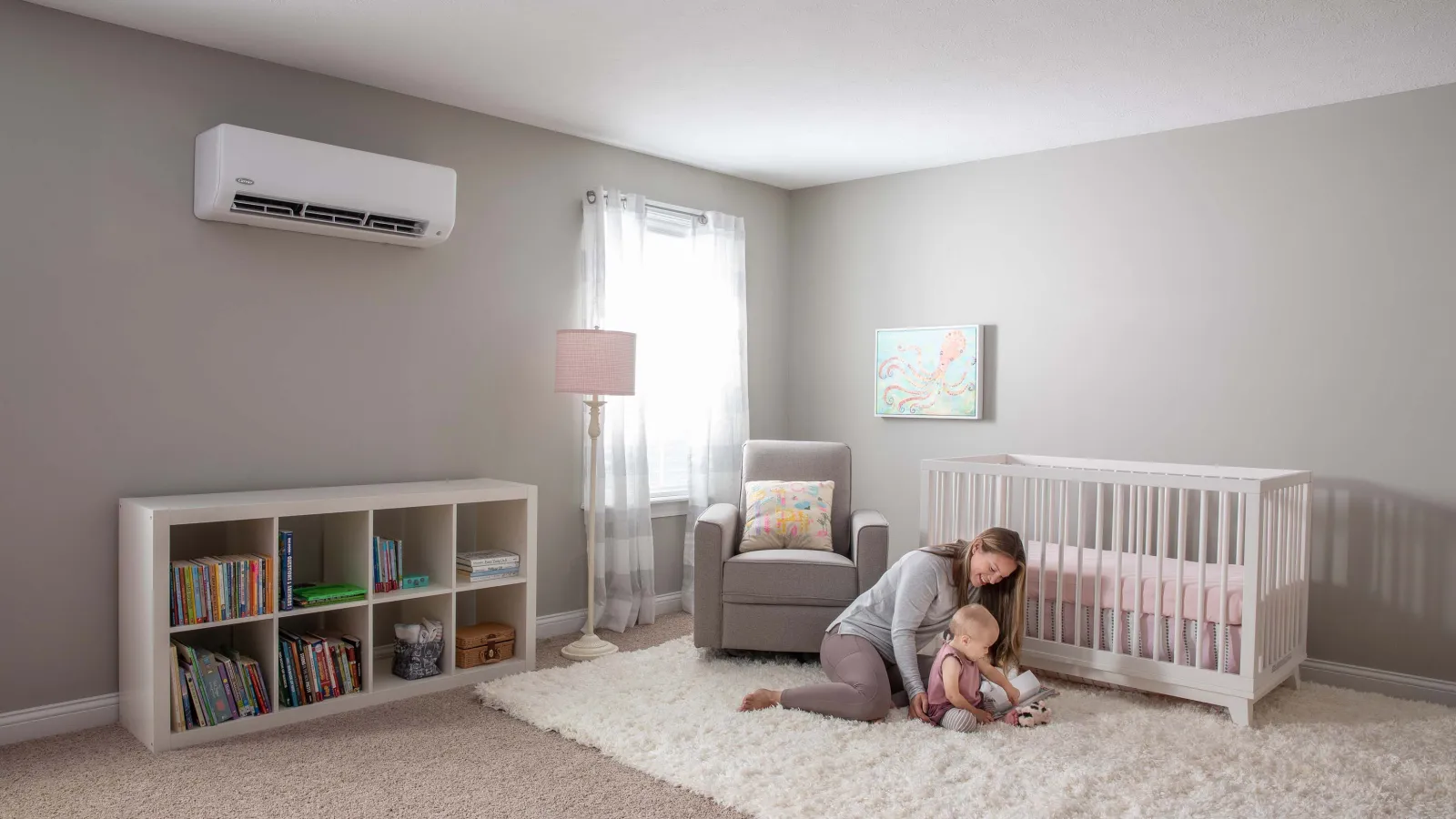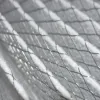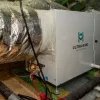Head over to any big box hardware store, and you’ll see air filters galore. Washable, disposable, pleated, cut-to-fit sizes… there’s just no shortage of options.
Of course, many of the most popular air filters are the ones that claim to filter out more stuff. These are the filters with Minimum Efficiency Reporting Values (aka, MERV) higher than 10, and the packaging usually tells you all the undesirable contaminants they can capture.
Should you get one of these filters? Sure, you might be thinking. Why not, right?
Unfortunately, it’s not that simple.
Basic air filters keep your HVAC system clean
Using HVAC and ventilation equipment to improve indoor air quality is a relatively contemporary concern. In the old days (okay, really just 20 or so years ago), the main purpose of air filters was to prevent the buildup of dirt and gunk on your HVAC system components.
That’s because dirty AC coils or furnace parts don’t work as well as clean ones. A dirty system is less efficient and less effective at keeping you comfortable. In extreme cases, a really dirty system can cease to function at all.
Air filters fix this problem. They capture dust, dirt, and other airborne particles so that those things can’t build up in your system. This is the “classic” purpose of an air filter, and you don’t need a high-MERV filter to keep your system clean.
High-MERV filters improve indoor air quality
Nowadays, there are other reasons to filter indoor air. Due to a variety of trends — one of which is the rising popularity of airtight, energy-efficient homes — homeowners have become increasingly concerned with indoor air quality.
That’s good! Many homes contain a lot of airborne contaminants, so properly filtering and ventilating indoor air can help you breathe easier, reduce discomfort from allergies, and help you avoid getting sick. If one of your goals with an air filter is to improve indoor air quality, higher MERV values are better. But there’s a catch…
A filter with a higher MERV value is denser than one with a lower MERV value. Absent any adjustments to your HVAC system, the “better” filter can impede airflow, make your house less comfortable, and reduce the lifespan of your system.
So, does a higher MERV value improve indoor air quality? Yes. Can it cause HVAC performance problems? Also, yes.
That’s a bummer, but there’s a solution to this problem.
You’ve got to size your air filter for the proper square feet per ton.
That sounds complicated, but it isn’t. All it means is that you need to make sure your HVAC system can still deliver the proper amount of air to all the rooms in your home, even after you’ve added the high-MERV air filter.
When it can’t, an HVAC pro will need to visit your house, take some measurements, and possibly adjust your system to accommodate the denser air filter.
Here’s a real-world example for you. Let’s say you have a 3-ton HVAC system that works well and keeps you comfortable. Ever since you’ve had it, you’ve used air filters rated at MERV 8. Last Saturday, you were perusing the shelves at Lowe’s, and lo-and-behold, there’s a 1″ MERV 16 air filter that fits your system and traps all this stuff that your old air filters didn’t! It looks like a good deal, so you buy the filter.
The problem is that when you add this filter to your 3-ton system, you’re not getting 3 tons of airflow anymore. You’re getting maybe 2.5 instead.
The short-term result is a less comfortable house. The long-term result is a more costly HVAC system that you have to replace sooner.
Note: You really ought to consult with an HVAC pro before switching to a filter with a higher MERV value. That way, you can figure out if anything needs to be done to accommodate the denser filter. Don’t just go to the hardware store and buy whatever you see!
Now let’s say you’ve figured out that this is the problem, but you still want the MERV 16 filter. After you call your HVAC technician, he or she will likely do the following:
- Determine whether your filter is allowing for two square feet per ton of air. This is a formula we use to ensure your filter is allowing enough airflow.
- Add a second return plenum (and filter) if your new filter is keeping the system from moving enough air. An additional plenum allows for increased airflow, negating the airflow consequences of the high-MERV filter.
- Enlarge the existing plenum and get a bigger filter of your preferred MERV value. This is another way to achieve the same objective. Depending on your HVAC setup, this might be preferable to adding a plenum.
At present, the American Society of Heating, Refrigerating, and Air Conditioning Engineers (ASHRAE) recommends using an air filter rated at MERV 13 with 14 or higher preferred. If you want to upgrade your home’s air quality and follow ASHRAE’s guidelines (a smart move), you may need to perform the above changes before installing the new air filter.
Ultimately, a professional will need to measure the total static pressure in the system to determine the best choice for your home. One or more of the above modifications is typically needed, but every home is different and requires a unique solution.
Want a better air filter for your Atlanta home? We can help with that.
If you want to improve indoor air quality but aren’t sure your system can accommodate a high-MERV air filter, we’ve got you covered.
The PV Heating, Cooling & Plumbing team has the knowledge, experience, and tools needed to measure the airflow and ensure you get the filtration quality you demand without sacrificing system performance! Just get in touch with us to schedule an appointment.
Oh, and if you’re reading this and aren’t sure when the last time you changed your air filter was, go change it now! A really dirty air filter can impede system performance, too.






